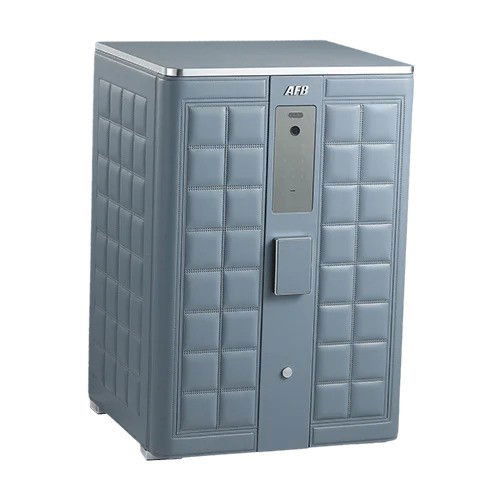



What is Rule #1 for Grooming a Dog? — The Pets Workshop
Grooming is more than just making a dog look neat and clean — it’s a vital part of keeping them healthy, comfortable, and happy. Every pet owner knows that regular grooming can prevent health issues, improve hygiene, and strengthen the bond between owner and pet. But when it comes to grooming, one golden principle stands above the rest: Rule #1 is always to prioritize the dog’s safety and comfort. In this article, we’ll explore what this rule means in practice, why it matters, and how dog owners (or aspiring professionals who want to learn pet grooming Singapore) can follow it in every grooming session. Why Safety and Comfort Are Rule #1 Dogs are sensitive creatures. Grooming involves handling tools like scissors, clippers, brushes, and nail trimmers, all of which can cause discomfort or even injury if used carelessly. By putting safety and comfort first, you ensure that: 1.Your dog feels secure — A calm and comfortable dog is easier to groom. 2.Accidents are avoided — Prioritizing safety reduces the risk of cuts, burns, or stress related injuries. 3.Trust is built — When dogs associate grooming with positive experiences, they are more cooperative in future sessions. 4. Long-term health is maintained — Proper grooming prevents painful matting, skin infections, and overgrown nails. For those who want to learn pet grooming in Singapore, understanding this rule is the foundation of professional training. No matter how skilled you are, safety and comfort always come first. The Essentials of Rule #1 in Dog Grooming 1.Create a Calm Environment Dogs pick up on energy. If you’re stressed or rushing, they’ll sense it and become anxious. A calm, quiet grooming space helps the dog relax. Soft background music or gentle words can also ease nervous pets. 2.Use the Right Tools Not all brushes or clippers suit every breed. For example: Long-haired breeds need slicker brushes to remove tangles. Short-haired dogs benefit from bristle brushes. Clippers must be sharp and well-maintained to avoid pulling fur. Using the wrong tool can cause discomfort, breaking the golden rule. 3.Handle Dogs Gently Firm but gentle handling is key. Pulling fur, twisting limbs, or holding too tightly can frighten the dog or cause pain. Always support your dog’s body, especially when trimming nails or cleaning ears. 4.Take Breaks Some dogs have short attention spans or low tolerance for long grooming sessions. Taking breaks ensures they don’t become overwhelmed or stressed. 5.Monitor Health While Grooming Grooming is also an opportunity to check for: Skin irritations Ticks and fleas Ear infections Overgrown nails Dental issues By noticing these signs early, you prevent discomfort and protect the dog’s overall well-being. Grooming Basics Every Owner Should Know Following Rule #1 means practicing safe grooming routines regularly. Here are some basics: Brushing Prevents matting and improves circulation. Always brush in the direction of hair growth. Be gentle to avoid scratching the skin. Bathing Use dog-specific shampoos to avoid skin irritation. Ensure water is lukewarm, not hot or cold. Dry thoroughly to prevent fungal infections. Nail Trimming Trim nails gradually to avoid cutting the quick (the blood vessel inside the nail). If unsure, trim little by little or seek professional help. Ear Cleaning Use vet-approved cleaners, not cotton swabs. Be gentle to avoid damaging the ear canal. Hair Trimming Scissors and clippers should be sharp to prevent tugging. Focus on sensitive areas like around the eyes, paws, and sanitary regions with extra caution. Common Mistakes That Break Rule #1 1.Rushing the Process — Grooming takes patience. Rushing may hurt the dog or cause stress. 2.Using Human Products — Human shampoos and scissors aren’t safe for dogs. 3.Ignoring the Dog’s Mood — Forcing grooming when a dog is anxious can lead to resistance and injury. 4.Skipping Regular Grooming — Infrequent grooming leads to matting and discomfort, making the next session even more stressful. Why Grooming Builds a Stronger Bond When you groom your dog with care, you show love and responsibility. The physical touch, gentle handling, and time spent together deepen trust. Dogs begin to associate grooming not as a chore, but as a bonding moment with their owner. This is why many owners who learn pet grooming Singapore find the process therapeutic, both for themselves and their pets. They don’t just master technical skills but also learn how to communicate with dogs through calmness and patience. Professional Grooming vs. At-Home Grooming While at-home grooming is essential, some dogs require professional care. Professional groomers are trained to handle: Advanced haircuts (breed-specific styles) Severe matting removal Nail grinding and paw pad trimming Anal gland expression If you’re unsure or uncomfortable handling certain tasks, it’s always safer to visit a professional groomer. In fact, many pet owners choose to learn pet grooming Singapore through courses, so they can confidently care for their pets at home while still seeking professional help when needed. Benefits of Learning Pet Grooming in Singapore For pet owners or aspiring professionals, taking a grooming course is invaluable. By enrolling in a course to learn pet grooming Singapore, you’ll: Gain hands-on training with professional tools. Understand breed-specific grooming needs. Learn animal handling techniques to ensure safety and comfort. Build confidence in trimming, bathing, and styling. Potentially turn grooming into a career or side business. In Singapore, where pet ownership is growing rapidly, demand for skilled pet groomers is increasing. Whether you’re an owner wanting to care for your own dog or someone considering a career shift, learning pet grooming locally is a smart investment. Tips for Following Rule #1 at Home 1.Always check your dog’s mood before grooming. If they seem anxious, calm them first. 2.Keep sessions short and sweet, especially for puppies. 3.Use treats and praise to create positive associations. 4.Invest in good-quality grooming tools. 5.Don’t hesitate to seek professional help if you’re unsure. Final Thoughts So, what is Rule #1 for grooming a dog? Always put safety and comfort first. From brushing and bathing to nail trimming and ear cleaning, every step should be guided by the dog’s well being. A well-groomed dog isn’t just about looks — it’s about health, hygiene, and happiness. For pet owners in Singapore, this rule is especially vital, given the hot and humid climate that requires regular grooming to prevent skin issues. If you’re keen to take your grooming skills to the next level, consider enrolling in a course to learn pet grooming Singapore. It’s the best way to ensure your furry friend always receives safe, comfortable, and professional-level care. By following Rule #1 and investing in knowledge, you’ll not only have a healthier pet but also a stronger, more trusting bond with your dog. Pop over here : https://www.thepetsworkshop.com.sg/
Đọc thêm
The Importance of Regular Cat Grooming: Why an Express Bath is more than just a wash — The Pets Work
Cats are known for their meticulous self-cleaning habits, often spending hours licking and grooming themselves each day. While this natural behavior helps them stay relatively clean, it does not replace the benefits of professional cat grooming Singapore. Many cat owners underestimate the importance of scheduling regular grooming sessions, thinking that their feline friend’s self-care routine is enough. However, professional grooming — even something as simple as an express bath — offers more than just a surface-level clean. This article explores why cat grooming is essential, the hidden benefits of an express bath, and how these sessions contribute to a cat’s overall health, comfort, and well-being. Understanding the Role of Cat Grooming Cat grooming is not just about keeping your pet looking cute and smelling fresh. It is an important part of maintaining their hygiene, preventing health issues, and improving their quality of life. Grooming can include a range of services such as brushing, nail trimming, ear cleaning, and bathing. Here’s why grooming matters so much: Maintains Healthy Skin and Coat — Regular grooming helps remove dead hair, dirt, and debris from the coat, which prevents matting and allows the skin to breathe. Reduces Shedding — Routine grooming minimizes the amount of loose fur around your home, making life more comfortable for both you and your cat. Prevents Hairballs — By brushing and bathing your cat, you reduce the amount of fur they ingest during self-grooming, leading to fewer hairball incidents. Early Detection of Health Issues — Grooming sessions often reveal lumps, bumps, parasites, or skin conditions that might otherwise go unnoticed. What is an Express Bath? An express bath is a focused grooming service designed to give your cat a quick but effective cleaning without the extras that might make a full grooming session longer. It typically includes a gentle bath, blow-dry, and light brushing. While it sounds simple, an express bath can make a big difference for your cat’s hygiene and comfort. Many cat owners assume baths are unnecessary because cats groom themselves. However, self-grooming does not remove all dirt, dander, or oils from the skin. Over time, this buildup can lead to unpleasant odors, greasy coats, and even skin irritation. Why an Express Bath is More Than Just a Wash An express bath offers several benefits beyond simply cleaning your cat’s fur: 1.Helps Control Allergens Cats produce a protein in their saliva and skin that is a common allergen for humans. Bathing your cat can help reduce the amount of this allergen present in their coat and around your home. 2.Removes Excess Oil Cats’ sebaceous glands produce natural oils that protect the skin, but too much oil can lead to greasy fur and unpleasant smells. An express bath balances oil production, leaving your cat’s coat shiny and soft. 3.Improves Circulation and Skin Health The massaging motion during bathing and drying stimulates circulation and promotes healthy skin. It can also help soothe mild irritations or itchiness. 4.Reduces Parasite Risk Bathing can remove fleas, ticks, and mites from your cat’s coat. When paired with preventive treatments, it lowers the chances of infestations. 5.Supports Shedding Control An express bath, combined with light brushing, removes loose fur more effectively than grooming alone, reducing shedding around the home. Grooming and Stress Management Many cats can become anxious when their fur becomes matted, greasy, or full of debris. Discomfort can lead to over-grooming, excessive scratching, and even changes in behavior. Regular cat grooming Singapore sessions, including express baths, help keep your feline comfortable and reduce stress-related grooming habits. Professional groomers are trained to handle cats gently and calmly, making the process less stressful. Over time, cats often become accustomed to the routine, making grooming a more positive experience for both pet and owner. The Hygiene Factor Even indoor cats can collect dust, dander, and dirt in their fur. Without regular cleaning, these particles can accumulate, leading to unpleasant odors and possible skin problems. An express bath removes impurities and leaves your cat smelling fresh, which also makes cuddle t ime more enjoyable for you. In addition, cats with longer fur may be more prone to sanitary issues, as debris can become trapped near the tail area. Bathing helps prevent infections and ensures a cleaner, healthier coat. Supporting Special Needs Cats Certain cats require grooming more frequently than others. Senior cats, overweight cats, or those with mobility issues may struggle to groom themselves properly. Without intervention, these cats can develop mats, skin infections, or other complications. Regular express baths and grooming sessions can significantly improve the comfort of these special-needs cats, helping them stay clean and healthy even when they cannot keep up with self-grooming. Partnering with a Professional Groomer While some cat owners attempt grooming at home, professional cat grooming offers significant advantages. Groomers have the right tools, products, and techniques to ensure a safe and effective bath without causing stress or harm to the cat. They can: Use shampoos specifically formulated for cats’ sensitive skin. Provide a comfortable environment with minimal noise and distraction. Spot potential health issues and notify owners early. Ensure proper drying to prevent dampness that could cause skin problems. Building a relationship with a trusted grooming professional can make ongoing care easier and less stressful for your pet. Establishing a Grooming Routine Consistency is key to reaping the benefits of grooming. Setting a regular schedule for express baths ensures that your cat stays clean and comfortable year-round. Short-Haired Cats — May only need an express bath every few months. Long-Haired Cats — Benefit from more frequent baths and brushing to prevent matting. Seasonal Changes — Cats may shed more during certain times of year, making baths more helpful during shedding seasons. Creating a predictable routine also helps your cat adapt to the grooming process, reducing anxiety over time. Health Benefits Go Beyond the Surface Regular cat grooming Singapore can play a crucial role in preventing skin issues, infections, and discomfort. By keeping the coat free of mats and debris, you minimize the risk of bacteria buildup and skin irritation. A clean, well-maintained coat also supports temperature regulation, which is especially important in warm climates. Cats that are groomed regularly often display more playful and relaxed behavior, as they feel physically better. A clean and comfortable cat is a happier cat. Final Thoughts Cat grooming should never be considered optional. Even though cats are naturally clean animals, they still benefit greatly from professional care. An express bath is far more than a simple rinse; it is a preventive health measure, a stress reliever, and a way to enhance your bond with your pet. By prioritizing regular grooming, you ensure that your cat stays comfortable, healthy, and looking their best. Whether you have a short-haired or long-haired cat, making express baths a routine part of their care will reward you with a healthier coat, fewer allergens in the home, and a happier, more confident feline companion. Your cat may not be able to thank you with words, but their improved health and relaxed demeanor will say it all. Regular cat grooming Singapore, including express baths, is one of the best investments you can make in your pet’s long-term well-being. Pop over here : https://www.thepetsworkshop.com.sg/services/
Đọc thêm
The Complete Guide to Pairing Digital Locks with HDB Fire Rated Doors — My Digital lock
Homeowners are increasingly looking for ways to blend security, convenience, and aesthetics in their homes. Among the many upgrades made to modern HDB flats, two features have stood out — the digital lock and the fire rated main door. While both are crucial for safety and style, pairing them correctly requires careful consideration of installation methods, compatibility, and compliance with HDB regulations. This complete guide explores everything you need to know about integrating digital locks with fire rated doors in HDB homes — from understanding specifications to choosing compatible models like EPIC or Lenovo digital locks. 1.Understanding Fire Rated Main Doors for HDB Flats Before discussing digital locks, it’s essential to understand what a fire rated door is and why it’s vital. A fire rated door is specially designed to resist the spread of fire and smoke for a specific period — usually 30 or 60 minutes in Singapore — allowing residents more time to escape and minimizing property damage. In HDB flats, the main door serves as a critical fire barrier between your home and the common corridor. Therefore, if you replace or modify this door, you must ensure that both the door and frame comply with the SCDF (Singapore Civil Defence Force) fire safety standards. Fire rated doors come with a certification label indicating the duration of resistance and the manufacturer’s details. These doors are generally constructed using solid core materials, such as engineered wood, metal sheets, or composite layers, which significantly influence how digital locks are installed. 2.Why Pair a Digital Lock with a Fire Rated Main Door? The combination of a fire rated main door and a digital lock represents the ideal balance between safety and convenience. Enhanced Security: Digital locks eliminate the need for traditional keys, reducing the risk of lock picking or duplication. Smart Access Control: Many models allow entry through PIN codes, fingerprints, RFID cards, or mobile apps, offering flexibility for families. Fire Safety Compliance: When installed correctly on a certified fire rated door, a digital lock can maintain the door’s fire resistance integrity. Modern Aesthetic: The sleek designs of digital locks complement the premium finishes of HDB fire rated main doors, creating a polished entryway. However, not all locks are suitable for fire rated doors — and this is where compatibility and proper installation become essential. 3.Installation Challenges: Thickness, Material, and Structure Installing a digital lock on a fire rated main door is more complex than on a standard wooden door. The fire-rated design introduces specific challenges that homeowners and installers must address to maintain safety compliance. a) Door Thickness Fire rated doors are usually thicker than regular doors, with an average thickness of 45mm to 50mm. This extra thickness helps resist heat transfer but can pose challenges when installing locks designed for standard 35mm doors. When selecting a digital lock, ensure the model supports thicker doors. Reputable models like EPIC, Lenovo, or Samsung often specify door thickness ranges on their technical datasheets. Always confirm this before purchase. b) Door Material Fire rated doors are made from solid cores, sometimes reinforced with metal sheets or mineral boards. These materials make drilling and fitting more difficult. Specialized tools and precision are required to prevent damage to the door’s internal structure or voiding the certification. Improper installation, such as over-drilling or removing too much core material, can compromise the fire resistance rating. Hence, it’s strongly recommended to engage HDB approved installers familiar with fire rated structures. c) Fire Certification Integrity When installing a digital lock, any modification must not affect the fire certification of the door. The installer must ensure the lock model itself is fire-rated tested or has been used successfully in similar certified setups. This is why professional installation is essential — unauthorized modifications could void the door’s SCDF approval. 4.Compatibility: Choosing the Right Digital Lock Models Not all digital locks are designed to withstand high heat or integrate seamlessly with fire rated main doors. Compatibility involves ensuring the lock’s design, dimensions, and materials align with the door’s fire protection standards. Here are two popular models that are highly compatible with HDB fire rated main doors: a) EPIC Digital Locks EPIC is a trusted brand in Singapore known for its fire-rated certified digital lock models. Fire-Resistant Certification: Certain EPIC locks have been tested to withstand heat exposure for up to 60 minutes, aligning with common HDB fire door standards. Become a member Multiple Access Modes: Fingerprint, PIN code, RFID, and mobile app access are available, offering security with flexibility. Anti-Tamper Alarm: Built-in sensors detect forced entry or high heat exposure, automatically triggering an alarm. Slim Profile: EPIC locks feature a sleek, minimalistic design that complements the clean lines of modern fire rated main doors without requiring deep drilling. EPIC models such as the EPIC 5G Pro and EPIC Popscan are frequently recommended for HDB installations due to their reliable performance and certified fire resistance. b) Lenovo Digital Locks Lenovo, known for its innovation in smart home technology, has expanded into the digital lock market with HDB-compliant and fire-rated models. Durable Construction: Built with fire-resistant alloys, Lenovo locks maintain function and structure even under extreme heat. Smart Connectivity: These locks often integrate with Wi-Fi or Bluetooth, allowing remote access and visitor management. Easy Retrofitting: Lenovo’s digital locks are designed for simple installation on existing fire rated main doors, minimizing alterations that could affect the fire rating. Other brands, such as Samsung, Kaadas, and Philips, also offer fire-rated models suitable for HDB settings. However, always ensure that your chosen lock has been certified for use with f ire rated doors in Singapore. 5.Professional Installation: Why It Matters Even the best digital lock can fail if installed incorrectly. For fire rated main doors, installation is not a DIY task — it must be handled by a qualified, experienced installer who understands the balance between structural integrity and fire safety compliance. Here’s why professional installation is essential: Certification Retention: A professional ensures no unauthorized modifications are made to the door’s core, keeping its certification valid. Proper Alignment: Incorrect alignment between the lock and strike plate can compromise both locking performance and fire resistance. Cable & Battery Safety: Digital locks powered by batteries must be installed without exposing wires or compromising insulation materials that resist heat. Warranty Protection: Manufacturers often require professional installation to honor warranty claims. A reputable installer will also provide documentation confirming that the installation complies with SCDF and HDB regulations, giving homeowners peace of mind. 6.Maintenance and Safety Tips Pairing a digital lock with a fire rated main door doesn’t end with installation — ongoing maintenance ensures both continue to function safely and effectively. Check Battery Levels Regularly: Most digital locks feature a low-battery warning. Replace batteries promptly to prevent lockouts. Inspect the Door Seal: Fire rated doors often include an intumescent strip that expands during a fire. Ensure it remains intact and free from obstruction. Avoid Unauthorized Drilling: If you wish to upgrade or reposition the lock, consult a certified installer to prevent voiding the door’s fire rating. Test Access Methods: Regularly test fingerprint or PIN entry systems to ensure quick access during emergencies. Schedule Annual Servicing: Have your digital lock and door inspected annually to confirm both comply with current fire safety standards. 7.Balancing Smart Convenience with Fire Safety While digital locks enhance everyday convenience, the ultimate goal of combining them with a fire rated main door is safety without compromise. A good installation maintains the door’s fire integrity while offering modern security functions such as remote access, one touch locking, and user management. Always verify that both the lock and the installer meet Singapore’s fire safety and HDB requirements. Remember: even a high-end lock can jeopardize your home’s safety certification if installed improperly. 8.Conclusion Pairing a digital lock with an HDB fire rated main door is a smart and forward-thinking choice for Singapore homeowners who value both convenience and safety. With trusted brands like EPIC and Lenovo, you can enjoy cutting-edge smart access solutions designed to work seamlessly with fire rated structures. By understanding installation challenges, verifying compatibility, and engaging certified professionals, you ensure that your home remains protected — not just from intruders but also from fire hazards. A well-matched digital lock and fire rated door in Singapore create the perfect blend of modern functionality, safety assurance, and aesthetic harmony for any HDB home. Pop over here : ** censored link ** #digitallock #HDBfireratedmaindoor
Đọc thêm
Professional Pet Grooming Course: A Complete Guide-The pets workshop
Pet ownership is on the rise worldwide, and with it, the demand for skilled pet groomers has never been greater. Many pet owners see grooming not just as a luxury but as an essential part of keeping their furry friends happy and healthy. This has created exciting career opportunities for those interested in working with animals. One of the best ways to gain the skills and knowledge needed to enter this field is by enrolling in a professional pet grooming course. In this article, we’ll take a closer look at what a professional pet grooming course involves, who should consider it, the benefits it offers, and how it can lead to a rewarding career in the pet care industry. What Is a Professional Pet Grooming Course? Pet grooming course is a structured training program designed to teach the techniques, tools, and best practices needed to groom pets safely and effectively. While grooming may seem as simple as bathing and brushing, it is actually a highly skilled profession. Groomers must understand different breeds, coat types, skin conditions, and even animal behavior to provide the right care. Most courses cover the following areas: • Bathing and Brushing: Proper cleaning methods, coat maintenance, and detangling. • Haircut and Styling Techniques: Learning breed-specific grooming standards as well as creative styles. • Nail Trimming and Paw Care: Safe techniques to trim nails and maintain paw health. • Ear and Eye Cleaning: Preventing infections and spotting early signs of health issues. • Handling and Safety: Techniques for working with nervous or aggressive pets. • Use of Grooming Tools: Clippers, shears, dryers, and other professional equipment. Courses can range from short workshops to in-depth programs that last several months, depending on the level of certification. Who Should Take a Professional Pet Grooming Course? This type of training is ideal for a variety of people: 1. Aspiring Pet Groomers: If you want to start a career in the pet grooming industry, a course provides the foundation you need. 2. Pet Owners: Many owners enroll in grooming courses to learn how to maintain their pets’ coats and health at home. 3. Veterinary Assistants or Pet Care Workers: Professionals already working in pet-related fields can add grooming skills to their services. 4. Entrepreneurs: If you’re interested in opening your own pet grooming salon or mobile service, professional training is essential. Benefits of Enrolling in a Professional Pet Grooming Course 1. Hands-On Training Unlike reading guides or watching videos online, these courses provide hands-on practice with different breeds and coat types under expert supervision. 2. Professional Certification Most courses award certificates that can be used to demonstrate credibility and attract clients. Certification is especially valuable when seeking employment at established grooming salons. 3. Improved Career Opportunities With the pet care industry booming, groomers are in high demand. Completing a professional pet grooming course makes you more employable and opens doors to self-employment. 4. Knowledge of Animal Health Many grooming programs also include training in recognizing skin infections, parasites, or abnormalities, which allows groomers to alert owners to potential health concerns. 5. Confidence and Safety Working with animals requires patience and skill. Courses teach safe handling techniques, reducing the risk of accidents for both the groomer and the pet. What to Expect During the Course Most professional grooming courses are structured into both theory and practice. Here’s what you can expect: • Theory Modules: Covering anatomy, coat types, breed standards, and hygiene practices. • Demonstrations: Instructors show grooming techniques step by step. • Practical Sessions: Students work on real pets, applying what they have learned. • Assessments: Students may be evaluated on speed, safety, and quality of grooming. Depending on the school, courses may be offered in-person, online, or as hybrid programs. Online programs are useful for learning theory, but practical sessions are best done in a handson environment. Career Opportunities After Completing a Professional Pet Grooming Course Graduating from a grooming course can lead to several career paths: 1. Working in Grooming Salons: Join established salons and gain experience while building a reputation. 2. Mobile Grooming Services: Offering convenience by grooming pets at clients’ homes. 3. Starting Your Own Business: Open a pet grooming salon and hire other groomers. 4. Specialty Grooming: Focus on show dogs, exotic pets, or creative styling. 5. Pet Care Centers & Veterinary Clinics: Some clinics hire groomers to provide full-service care. Groomers with strong skills and customer service can also expand into teaching or product endorsements in the growing pet care industry. Tips for Choosing the Right Professional Pet Grooming Course When selecting a course, consider the following factors: • Accreditation: Check if the course is recognized by grooming associations. • Curriculum: Ensure it covers both theory and practical training. • Experienced Trainers: Look for instructors with years of hands-on experience. • Facilities: A good training center should have modern tools and a variety of animals for practice. • Flexibility: If you’re working or studying, look for part-time or weekend classes. Cost vs. Value: Compare tuition fees with the quality of training, certification, and career support offered. The Growing Demand in Singapore and Beyond In places like Singapore, where pet ownership is steadily increasing, more families are investing in professional grooming services. Many pet owners treat their animals as family members and expect top-quality care. A well-trained groomer can quickly build a loyal client base by providing excellent service. This makes a professional pet grooming course an excellent investment for anyone passionate about animals and interested in turning that passion into a career. Conclusion A career in pet grooming is not just about making pets look cute — it’s about ensuring their overall comfort, health, and well-being. By enrolling in a professional pet grooming course, you gain the technical skills, confidence, and credibility to succeed in this growing industry. Whether you plan to work in a salon, start your own business, or simply want to groom your own pets with care, formal training can open the door to countless opportunities. If you love animals and want a rewarding career that combines creativity with compassion, a professional pet grooming course could be your perfect starting point. Visits us : https://www.thepetsworkshop.com.sg/
Đọc thêm
The Rise of Aromatherapy and Relaxation Techniques in Dog Spas-The Pets Workshop
Pet care has moved far beyond the basics of feeding, exercise, and occasional vet visits. For many pet owners, dogs are more than just companions — they are beloved family members who deserve the best care and comfort. This growing perspective has fueled the rise of dog spas, wellness centers dedicated to offering pampering and therapeutic treatments for canine clients. Among the many services that have gained immense popularity, aromatherapy and relaxation techniques stand out as key trends shaping the modern dog spa experience. Dog grooming Singapore has traditionally been about hygiene and aesthetics — bathing, brushing, nail trimming, and coat maintenance. While these remain essential, the evolution of grooming into a holistic experience has introduced an entirely new dimension to canine wellness. Aromatherapy, massage, and relaxation practices are now being integrated into spa services, with the goal of enhancing not just physical cleanliness but also emotional wellbeing. This movement reflects a broader trend in pet care: treating dogs to the same stress relieving therapies that humans value for balance, health, and happiness. Understanding Aromatherapy for Dogs Aromatherapy is the use of natural plant-derived essential oils to promote relaxation, alleviate stress, and improve overall wellness. For humans, aromatherapy has long been associated with calming environments, reducing anxiety, and even improving sleep. In dog spas, these principles are carefully adapted for canine physiology. Essential oils like lavender, chamomile, and frankincense are among the most commonly used in canine aromatherapy because of their soothing and non-toxic properties when applied correctly. These oils may be diffused in the air, lightly applied to bedding, or diluted and used in massage oils. The goal is to create a calming environment where dogs can unwind during and after grooming sessions. Unlike humans, dogs have a far more sensitive sense of smell. This means that aromatherapy must be approached with expertise to ensure safety. Professional spa practitioners understand how to use gentle dilutions and safe application methods, ensuring that aromatherapy benefits the dog without overwhelming their senses. The Connection Between Stress and Grooming Many dogs experience stress during grooming. The sound of clippers, the feeling of water, or simply being away from home can trigger anxiety. This is especially true for rescue dogs, senior pets, or breeds with naturally nervous dispositions. Stress during grooming can lead to resistance, fidgeting, or even aggression, making the process difficult for both dogs and groomers. Aromatherapy provides a solution by introducing a calming element into the grooming environment. The presence of gentle, soothing scents can relax a dog’s nervous system, reduce fear, and create positive associations with grooming sessions. Over time, this conditioning helps dogs view grooming not as a stressful event but as an enjoyable and calming experience. In this way, aromatherapy is not just a luxury but a practical tool that makes dog grooming in Singapore more effective, safe, and pleasant for everyone involved. Relaxation Techniques in Dog Spas Beyond aromatherapy, dog spas are adopting relaxation techniques that mirror the wellness industry for humans. These treatments aim to reduce stress, promote circulation, and encourage a sense of calm in canine clients. Some of the most popular relaxation techniques include: 1. Canine Massage Therapy Massage for dogs goes beyond pampering — it has genuine therapeutic benefits. Gentle kneading and stroking techniques help relax tense muscles, improve blood flow, and release endorphins, the body’s natural feel-good chemicals. For older dogs, massage can also help with joint stiffness and mobility. When combined with diluted essential oils, massage becomes both physically soothing and mentally calming. 2. Sound Therapy and Music Many spas integrate soft music, nature sounds, or even specialized canine relaxation tracks to create a serene environment. These soundscapes work hand in hand with aromatherapy, lowering stress hormones and helping dogs relax during grooming. 3. Hydrotherapy Baths While hydrotherapy is often used in rehabilitation, many spas now incorporate warm, soothing baths infused with calming scents. These not only cleanse the coat but also provide a sensory experience that relaxes muscles and reduces anxiety. 4. Mindful Handling Techniques Relaxation is not just about treatments but also about how groomers interact with their canine clients. Gentle handling, patient communication, and slow, deliberate movements can ease anxiety. When combined with aromatherapy, these techniques create a holistic spa atmosphere that nurtures trust and comfort. The Role of Dog Grooming in Emotional Well-Being Dog grooming services is no longer a purely physical necessity; it has become an opportunity to support emotional wellness. Just as humans use spa treatments to unwind from stress, dogs too can benefit from calming rituals that soothe their nervous systems. Stress reduction is vital for dogs because chronic stress can lead to health issues such as digestive problems, weakened immunity, and behavioral challenges. Grooming that incorporates aromatherapy and relaxation techniques helps address these issues proactively. By making grooming sessions positive and enjoyable, dogs become more cooperative, healthier, and overall happier. The Humanization of Pet Care The rise of aromatherapy and relaxation techniques in dog spas reflects a larger cultural shift: the humanization of pets. Owners increasingly view their pets as family members and are willing to invest in treatments that improve quality of life. This humanization trend has redefined the dog grooming industry. Instead of simply maintaining cleanliness, spas now offer a range of wellness-focused services designed to enhance comfort and relaxation. The integration of holistic therapies is no longer seen as indulgent but as a natural extension of responsible pet ownership. The Science Behind Relaxation Therapies While some may view aromatherapy and canine relaxation as luxuries, scientific studies support their effectiveness. Research shows that lavender, for instance, can lower heart rate and reduce barking in stressed dogs. Massage has been demonstrated to lower cortisol levels and improve circulation. Even sound therapy has been linked to calmer behavior in shelter dogs. These findings validate the role of aromatherapy and relaxation techniques in dog grooming Singapore, proving that they are not mere trends but scientifically grounded practices that enhance canine well-being. The Future of Dog Spas and Wellness As awareness of canine mental health grows, the popularity of aromatherapy and relaxation in dog spas will only continue to rise. Future innovations may include customized essential oil blends tailored to individual dogs, advanced relaxation pods with controlled soundscapes, or even wearable aromatherapy diffusers designed specifically for pets. Moreover, the integration of technology may allow spas to monitor stress levels in real time, adjusting aromatherapy intensity or music selection to match a dog’s needs. The possibilities are vast, and they all point toward a future where grooming is seamlessly blended with wellness. Conclusion The rise of aromatherapy and relaxation techniques in dog spas signals a significant evolution in the world of pet care. What was once a simple routine of bathing and brushing has grown into a holistic experience that nurtures both body and mind. Aromatherapy brings calming scents that reduce stress, while relaxation techniques such as massage, hydrotherapy, and sound therapy transform grooming into a soothing ritual. Dog grooming is no longer just about appearance — it has become a gateway to better emotional and physical health. By embracing these modern spa treatments, pet owners can ensure their dogs not only look their best but also feel relaxed, happy, and loved. The future of dog grooming Singapore lies in this harmony between wellness and care, proving that even our four-legged friends deserve the serenity of a spa day. Visits us : https://www.thepetsworkshop.com.sg/
Đọc thêm
Custom vs. Template Web Design: Which is Right for Your Business? — Subraa
When embarking on a new Singapore website design project, one of the first decisions businesses face is whether to opt for custom web design or use a pre-built template. Both options have their advantages and drawbacks, and the right choice depends on your brand’s unique needs and goals. Custom Web Design: Tailored for Your Brand Custom website design Singapore is like creating a bespoke suit for your brand. Every element is designed specifically for your business, ensuring a unique and personalized experience. This approach allows you to align your website’s aesthetics, functionality, and user experience (UX) perfectly with your brand identity. Custom designs are highly scalable, making them ideal for businesses planning to grow or requiring complex functionalities like e-commerce platforms, custom integrations, or advanced user interactivity. However, these benefits come at a higher cost and longer development timeline. Despite the investment, custom web design can deliver a competitive edge, showcasing your brand’s uniqueness and professionalism. Template-Based Web Design: Quick and Budget-Friendly Templates, on the other hand, offer a cost-effective and time-efficient solution. With thousands of pre-designed options available, businesses can choose a template that closely matches their needs and launch their website quickly. Templates are especially useful for startups and small businesses with limited budgets or those requiring a simple online presence. However, they come with limitations in terms of customization, scalability, and originality. Because templates are widely used, your website may not stand out as much in a competitive market. Finding the Right Fit Choosing between custom web design and templates ultimately depends on your goals, budget, and timeline. If your brand values uniqueness and requires advanced functionality, custom website design Singapore is the way to go. For those on a tight budget or with simpler needs, templates can be a practical starting point. By weighing the pros and cons of each option, you can ensure your web design Singapore aligns perfectly with your brand vision and business strategy. Learn more on our site : https://www.subraa.com/ #websitedesignSingapore #Singaporewebsitedesign
Đọc thêm
Best Practices for User-Friendly Website Navigation — Subraa
A website’s navigation is one of its most critical aspects. It determines how easily visitors can f ind the information they seek and interact with your content. A user-friendly design ensures a seamless browsing experience, helping to retain visitors and convert them into loyal customers. Whether you’re working with a professional agency or a freelance web designer Singapore, following these best practices can make your website truly navigable and user friendly. 1.Prioritize Simple Navigation The primary goal of website navigation is to help users locate information effortlessly. Avoid cluttered menus and stick to a clean, logical structure. Limit the number of primary menu options to avoid overwhelming users. Incorporate dropdown menus for subcategories to keep things tidy and organized. 2. Optimize for Mobile Devices With mobile browsing on the rise, responsive design is non-negotiable. Ensure that menus and navigation tools are accessible and functional across all screen sizes. A skilled freelance web designer in Singapore can create a design that seamlessly adapts to various devices, offering a consistent user experience. 3. Use Clear Call-to-Actions (CTAs) Guide your visitors by strategically placing clear and concise CTAs. Use phrases like “Learn More,” “Sign Up,” or “Contact Us” to direct users toward desired actions. Ensure CTAs are visually distinct and easy to locate. 4. Include a Search Bar For content-rich websites, a search bar is invaluable. It allows users to quickly find specific information without navigating through multiple pages. Place it prominently, such as in the header or a fixed location. 5. Test and Refine User testing is key to understanding how visitors interact with your website. Gather feedback to identify pain points and make improvements. Many freelance web designers offer user testing services to ensure optimal navigation and usability. By implementing these practices, you can create a website that not only attracts visitors but also keeps them engaged. Whether you’re building a new site or revamping an existing one, partnering with an experienced freelance web designer can make all the difference in delivering a user-friendly, navigable design. Visit our Site : https://www.subraa.com/
Đọc thêm








